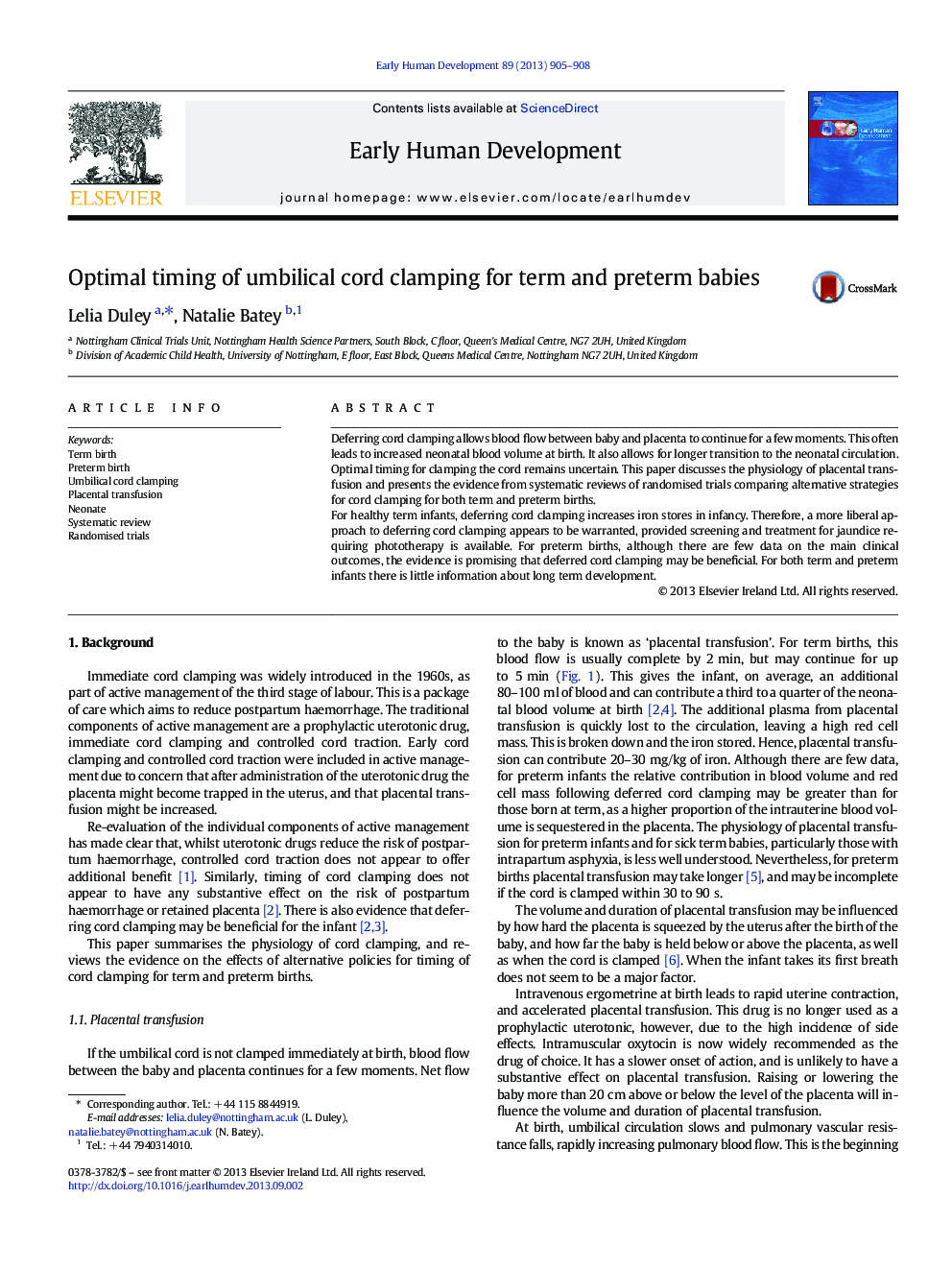| Article ID | Journal | Published Year | Pages | File Type |
|---|---|---|---|---|
| 3916756 | Early Human Development | 2013 | 4 Pages |
Deferring cord clamping allows blood flow between baby and placenta to continue for a few moments. This often leads to increased neonatal blood volume at birth. It also allows for longer transition to the neonatal circulation. Optimal timing for clamping the cord remains uncertain. This paper discusses the physiology of placental transfusion and presents the evidence from systematic reviews of randomised trials comparing alternative strategies for cord clamping for both term and preterm births.For healthy term infants, deferring cord clamping increases iron stores in infancy. Therefore, a more liberal approach to deferring cord clamping appears to be warranted, provided screening and treatment for jaundice requiring phototherapy is available. For preterm births, although there are few data on the main clinical outcomes, the evidence is promising that deferred cord clamping may be beneficial. For both term and preterm infants there is little information about long term development.
